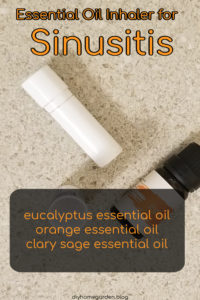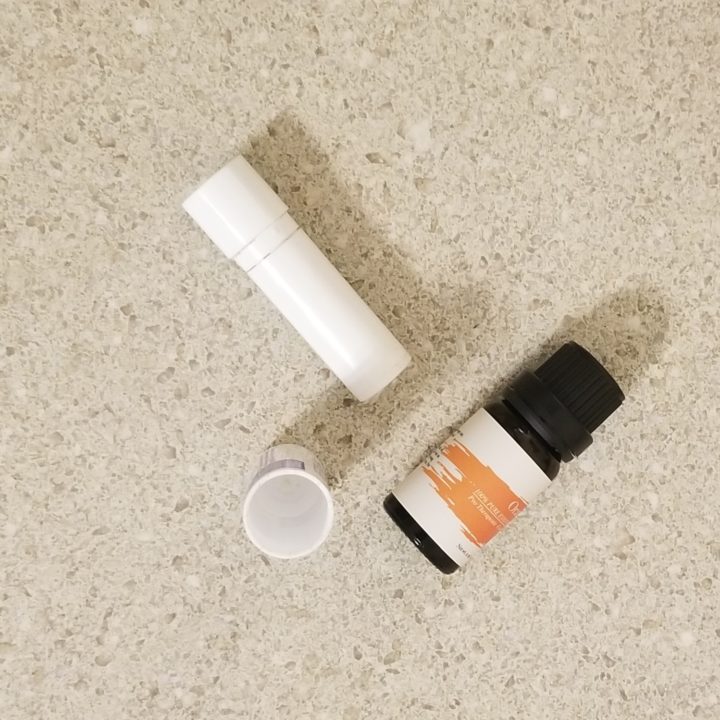Sinusitis, also known as rhinosinusitis or sinus infection, refers to the common inflammation of the nasal sinuses. Those are the cavities tasked with the production of mucus meant to keep the inside of your nose moisturized, thus protecting it from dust, dirt, pollutants, as well as germs.
Bacteria, fungus, viruses, and allergens are the major causes of such inflammations.
When inflamed, the sinuses don’t drain efficiently thus leading to the build-up of mucus and hence the often felt “head pressure” and stuffed nasal passages—which both make it hard to breathe.
There are various types of sinusitis (depending on the cause), however, a viral sinus infection is the most common and often presents with symptoms such as sore throat, nasal congestion, runny nose, sneezing, and coughing.
These symptoms can last anywhere between 7-10 days and in most cases don’t require treatment, though you can still opt for medication or other home remedies.
The other types of sinusitis include:
Types of sinusitis aka sinus infections
i) Bacterial sinusitis—the symptoms here include nasal discharge, which can be thick and appear yellow or green in color; AND OR facial pain and pressure.
Usually, antibiotics like amoxicillin help with symptom relief. It can take anywhere between 10-14 days for the symptoms to clear up.
ii) Allergic sinusitis—this is mainly due to allergies and often leads to inflammation of the mucous membranes, which in turn interferes with the normal sinus drainage. No wonder the often manifesting symptoms like nasal congestion, sneezing, itchy eyes, nose, and throat, AND runny nose with clear mucus.
Such symptoms can be seasonal and sometimes may even linger on…all year round.
Treatment options include avoiding allergic triggers, getting allergy shots, or the use of antihistamines.
iii) Chronic sinusitis—the most common symptoms here include post-nasal drainage and nasal congestion, which usually also feature coughs that tend to worsen at night and early hours of waking up in the morning.
These symptoms can last for months; however, treatments such as nasal steroid sprays can be used for relief from such discomforts.
Effective home remedies for sinusitis
1. Stay hydrated
Other than helping with skin rejuvenation, adequate intake of fluids also helps lubricate your sinuses and aids the thinning of mucus, therefore, encouraging proper drainage of the sinuses.
Also to reduce sinus inflammation, avoid alcohol as it only worsens the swelling.
2. Use a humidifier
Consider using a humidifier, especially in the room(s) you spend most of your time in to help add moisture to the air.
When inhaled, the moisture helps relieve sinus congestion and irritation of the mucous membranes, which otherwise may be caused by dry air, chlorinated water or tobacco smoke. All of which create a conducive environment for sinus infection.
To be safe, always ensure that your home’s humidity falls between 30 and 50%.
Anything below that can lead to dry air or alternatively encourage the growth of molds—this is especially for humidity above the recommended 30-50% range.
3. Try out nasal irrigation
Nasal irrigation entails the rinsing and clearing of the nasal passages with a saline solution or salt water. The process helps flush out the irritants and eliminate the excess mucous to ensure the air passages remain open and moist for effective breathing.
You can opt to use a neti pot or a bulb syringe. However, consider using sterile, distilled, or previously boiled water when preparing the irrigation solution to avoid possible further infections. However, do not put boiling water into the neti pot–you’ll burn your nose!
Also, remember to rinse the device after every use and allow it to air dry.
4. Apply warm compresses
Gently applying warm compresses, especially on the affected area can help alleviate some of the discomfort resulting from the swelling.
Place warm wet clothing on the affected area of your face for a few minutes—this can be your cheeks, eyes, or forehead; to help take away the pain and pressure.
5. Get adequate rest
It’s almost impossible to concentrate on work or studies when suffering from sinusitis owing to the pressure and discomfort that come with the symptoms.
Resorting to adequate rest allows the body to fight infections while also speeding up the healing process.
Lay on your back with your head propped up with a pillow when resting, to allow for easier breathing.
6. Essential oils
Many essentials oils including eucalyptus, clary sage, rosemary, and peppermint, feature anti-inflammatory and powerful antioxidants. Those properties help with pain relief, fighting bacteria and reducing inflammation. Properties that have led to their utilization in the treatment of sinusitis symptoms–mainly via inhalation.
To inhale, consider either of the following ways:
- Direct inhalation—whereby you release a few drops of the essential oil to a tissue paper, then hold it near your face as you gently breathe in. Or, use a lip balm tube to make a portable inhaler you can carry in your tote bag. See the instructions below.
- Steam inhalation—get a bowl of hot water, preferably boiling water and add in a few drops of essential oil. Then proceed to inhale the steam. If possible form a steam chamber by covering your head with a blanket or towel—it’s more effective that way.
- Add to a warm bath—Add in a few drops of the essential oil to your bath and breathe in the steam as you relax.
- Use a diffuser—a diffuser helps disperse the essential oil into the air. Thus, you can easily inhale it continuously for more effective and quick relief from the symptoms.
Essential Oil Pocket Inhaler for Sinusitis Relief
Yield: 1Prep Time: 1 minuteActive Time: 1 minuteTotal Time: 2 minutesTake relief for your sinusitis with you in your pocket or purse. It takes less than three minuts to make this pocket inhaler.
Materials
- clean lip balm tube (recycled and cleaned or purchase on Amazon)
- one cotton round
- eucalyptus essential oil
- orange essential oil
- clary sage essential oil
Tools
- scissors
Instructions
- Roll the cotton round into a tight wick and insert it into the lip balm tube. Cut it down so that no cotton sticks out. You can also fold it over, but you might find the cap difficult to place.
- Remove the cotton round and lay flat on a non-porous surface.
- Place the following essential oils on the cotton round: 10 drops of eucalyptus essential oil, 6 drops of clary sage essential oil, 6 drops of orange essential oil.
- Roll the cotton back into a wick and insert it back into the lip balm tube.
- Remove cap and enjoy direct inhalation for on the go sinus infection relief. Replenish oils as needed.
Notes
Here's why I love these essential oils for sinus infection relief:
- Eucalyptus essential oil offers fast comfort for congestion. Of course, many use it in steam vaporizers. It's classic relief.
- Clary sage essential oil calms your congestion. Plus, it contains natural antibacterial properties. Thus, if your sinusitis is bacterial in nature, it promotes healing.
- Orange essential oil boosts your mood when you're feeling under the weather. Additionally, the bright citrus fragrance brightens the "heaviness" of the eucalyptus and clary sage notes.
Recommended Products
As an Amazon Associate and member of other affiliate programs, I earn from qualifying purchases.
Note: Never swallow or apply an essential oil directly to your skin. A carrier oil is a must for topical applications to avoid irritation.

7. Consider over-the-counter (OTC) pain relievers
In most cases, a sinus infection will clear out on its own but still, you can use over-the-counter medication to manage the symptoms.
Some of the commonly used OTC sinusitis symptoms’ treatment options include:
- Decongestants—which helps regulate (by reducing) mucous production thus easing congestion.
- Acetaminophen—which helps reduce the pain brought about by the inflamed nasal passages.
8. Switch to anti-inflammatory foods
Anti-inflammatory foods do the complete opposite of an inflammatory diet.
Want to reduce your susceptibility to infections? Then go for a healthy diet—the anti-inflammatory foods. They not only help reduce inflammation but also play a vital role in mood-boosting and your overall life quality.
An anti-inflammatory diet comprises of:
- fruits such as oranges, blueberries, cherries, and strawberries
- green leafy vegetables like kales, collards, and spinach
- tomatoes
- nuts like walnuts and almonds
- fatty fish like tuna and sardines
- baked lean protein including poultry.
You obviously want to stay away from foods that accelerate inflammation, therefore, avoid or cut down your consumption of refined carbohydrates, fried foods, red meat, and artificially sweetened beverages like soda.
9. Steam inhalation
Inhaling steam from showers or one from a bowl of not-so-hot water can also offer relief from nasal inflammation and congestion.
Flick a few drops of rosemary or peppermint essential oil against the shower wall to soothe your breathing as you shower. But, be careful not to get the slippery oil onto the shower floor!
10. Consider eating Immune-boosting foods
Immune-boosting foods such as ginger, broccoli, garlic, citrus fruits, and onions help protect you from possible attacks by a sinus infection and many other illnesses.
In fact, foods like onions and ginger also help ease sinusitis symptoms plus speed up the recovery process.
The Takeaway on Winning the Battle Against Sinusitis
As earlier stated, sinusitis can be a result of a virus, bacteria, fungus, or an allergen; therefore, making it important to first establish the trigger before taking on a remedial measure.
Though in most cases the infection will subside on its own, in rare instances, it can trigger potentially life-threatening conditions. These ailments include meningitis, thrombosis, bone, and eye infection, or brain abscess.
And this may present with symptoms like the following:
- severe headache
- forehead inflammation
- changes in vision accompanied by pain when moving the eyes
- redness in the eyes
- seizures
- confusion. Seek immediate medical attention if you notice any of these signs.
Also, consider visiting your doctor if you don’t feel any better with at-home remedies; or if the “usual” symptoms stretch beyond the 7-10 days period. You may also want to mention any cases of a recurring sinus infection so that proper treatment be initiated.



